Types and varieties of perennial mallow, planting methods and rules for flower care
Malva, which is often called mallow, kalachik, stock-rose, has been cultivated as a garden and medicinal plant since ancient times. Perennial mallow is loved by gardeners, because planting and caring for it is simple and does not require special knowledge.
Mallow species
The genus mallow, found in nature, is a huge “family” consisting of one-, two- and perennial species. The most common is forest mallow, which includes many forms that differ in height, leaf shape, size and flower color. On its basis, more than 60 cultivated species have been bred. Hybrid, wrinkled, Sudanese, musk mallow are popular perennials, permanent inhabitants of our gardens. They are united by long flowering, drought and frost resistance, ease of care.
Perennial
Perennial mallows are represented by the following species.
- M. musky (nutmeg) - up to a meter tall, flowers with a diameter of 5 cm, pink or white, very fragrant, bloom until frost.
- M. Sudanese (Sudanese rose, Sabdariffa hibiscus, okra, hibiscus) is commonly cultivated as a biennial. There are two common garden forms - tree and shrub. The species is valued in addition to decorativeness for the healing properties of fruits and bright red flowers.
- M. wrinkled (stock-rose) refers to mallow itself conditionally. The height of the peduncle of a wild plant reaches 2 m, the flowers are small, up to 3 cm, painted in lemon yellow. Garden varieties differ in height - from 75 cm to 2 m, various colors of simple, semi-double and double flowers.
- M. hybrid usually gives several peduncles up to 2 m high, flowers are large, bloom until September. Their color is represented by a wide range of colors - white, pink, purple, peach, etc.
- M. treelike, often called garden hibiscus, grows up to 3 m. It is formed by a bush or tree. Blooms all summer, flowers lilac, purple, white.
When choosing mallow, a peculiarity is taken into account: often among the annual species there are perennial varieties derived from them, and vice versa - perennial species include annual varieties.
Popular varieties of perennial mallow:
- M. musky - Perfection, White Tower, Pink Tower;
- M. Sudanese - shrub Sadbariffa, treelike Altissima;
- M. wrinkled - Majorette Mixed, Single Mixed, Powder Puffs Mixed, Summer Carnival, Zebrina Lilac, Fiesta Time;
- M. hybrid - Powder Puffs, Chater's Double, Gibbortello.
Annuals
A striking representative of annual mallow is forest mallow. Its features are poor tolerance of frosty winters and prolonged flowering - from the second half of May to mid-autumn.
Popular annual varieties:
- Zebrina with large flowers, colored in various shades of pink with pronounced deep red stripes;
- Black mother-of-pearl - flowers are large, dense purple with longitudinal black stripes.
Planting mallow
Perennial mallows usually form flower stalks from the second year after planting. But connoisseurs of a beautiful flower know the secret of flowering in the first year. Both options deserve detailed consideration.
Despite its unpretentiousness, mallow does not like transplants; the choice of a place for its planting is treated with special attention.
- The site should be well lit, but slightly shaded at noon.
- You can not plant mallow in lowlands, in places with a close occurrence of groundwater or where melt and rain water accumulates.
- Drafts negatively affect flowering, and gusts of wind can break tall stems. Choose a place where the plant will be protected from these misfortunes. Mallow is usually planted along fences or walls.
For lush flowering and longevity, mallow needs light, air and moisture permeable fertile soil with a neutral reaction. In too dry, depleted areas, it will not bloom, excessively moist soil contributes to the development of root rot.
Planting seeds in open ground
In April-May, seeds of perennial mallow can be sown in open ground. In the first year, the plant will form a full-fledged root system and leaf rosette, with which it will leave for the winter.
- The first stage is soil preparation. The earth is dug up together with organic matter (rotted manure, humus, compost) and mineral complexes, and the remaining roots of predecessor plants are removed.
- Prepare holes or grooves with a depth of 1.5-2 cm with an interval of at least 10 cm, if the plantings are thinned out. If the seeds are sown immediately into place, the distance between the planting pits is kept about half a meter.
- Seeds are laid out in a hole, covered and poured with warm water.
Seedlings appear in 2 weeks. Mallow will bloom from the second year.
Take your time to thin out the seedlings: the mallow root system is sensitive to such stresses. The plantings of mallow are thinned out in the middle of autumn, when the roots are formed and get stronger.
Sowing in winter is carried out in October. Dig holes about 3 cm deep, spread 4-5 seeds each and cover with a mixture of peat and earth. Then the plantings are mulched with peat, fallen leaves or hay, throwing branches on top. Flowering is expected in the first season.
Seeds sown before winter begin to germinate as soon as the soil warms up slightly. To protect the seedlings from return frosts, they are covered with lutrasil.
Planting seedlings
The seedling method is good because beautiful flowers will bloom in the first year.
The seeds are sown one at a time in peat tablets or small pots. This is important for mallow - the fewer transplants it undergoes, the healthier its root system will be. Seeds do not require pre-treatment, however, experienced gardeners recommend soaking them for 12 hours in order to reject non-viable ones.
Sowing dates: mid-February - early March.
As a substrate for germination, use a commercially available universal soil for flowers or seedlings. If desired, the substrate is made up independently from sod land and humus (compost, peat), taken in a 1: 1 ratio.
Seedlings are grown according to the following algorithm.
- The seeds are spread on the surface, sprinkled with soil mixture with a layer of 0.5-1 cm, moistened with a spray bottle and covered with a film or placed in a mini-greenhouse.
- Crops are placed in a warm (20-25 ° C) place with bright diffused lighting.
- Before the emergence of sprouts, monitor the moisture content of the substrate, ventilate the greenhouses.
- Seedlings appear by the end of the second week. The protective film is removed.
- Seedling care is extremely simple: regular moderate soil moistening, additional lighting up to 10-12 hours a day, periodic loosening of the soil.
- 10-15 days before transplanting into open ground, the seedlings begin to harden, otherwise the seedlings may die in a few hours.
- If the seedlings are grown in a common seedling box, the seedlings dive at the 2-leaf stage and are immediately planted in separate cups.
Seedlings are planted on a flower bed by transshipment. The interval between low-growing plants is kept 45-40 cm, tall - 55-60 cm.
Outdoor care
Water the mallow sparingly: each bush needs 5 liters of water 1-2 times a week. In dry periods, flowers require watering every other day. The usual mode of humidification is possible, but the amount of water is doubled.
It is preferable to use rainwater, the tap water should be left to stand for at least a day. Plants of the first year are watered more often, but waterlogging of the soil is not allowed.
A week after planting, the first feeding is carried out: organic matter is introduced - peat, compost or humus at 3 kg / m2... If fertilizers were added during planting, there is no need to feed.
Then the mallow is fertilized at the beginning of the budding stage, mineral complexes are used. Top dressing is repeated every 3-4 weeks until the end of flowering.
First-year mallows are fed before winter so that they can better endure the cold.
Recommended mineral fertilizers:
- NPK for application in spring and before winter;
- "Multiflor" with chelates;
- Agricola for flowering plants.
When stockrose is grown from seeds sown outdoors, treatments such as soil tillage and weeding are especially important. For a developing root system, oxygen is just as important as moisture and good lighting. Loosening is carried out to a depth of about 5 cm, being careful: damage to the roots can lead to the death of the bush. At the same time, weeds are removed, depriving seedlings of nutrients that interfere with normal development.
Tall stems of mallow are devoid of flexibility, for their safety they use supports - stakes, rods made of wood, metal, etc. It is better to install them when planting a plant so as not to damage the root system.
Faded inflorescences are removed to prolong flowering time. A completely faded peduncle is cut to 20 cm from ground level.
At the end of flowering, the stalks of the mallow are cut flush with the ground and mulched with humus. For the middle strip, it is recommended to lay out spruce branches on top. In warm regions, adult plants tolerate winter frosts well, content only with mulch.
Regardless of the region of cultivation, young mallows are insulated more thoroughly: they are covered with a thick layer of dry leaves on top of the mulch, and spruce branches are placed on top.
Diseases and pests
Unfavorable weather conditions - temperature drops, prolonged bad weather - become the main cause of the manifestation of fungal diseases. For mallow, typical diseases are mosaic, powdery mildew and especially rust. Violations of the rules of care or the close occurrence of groundwater also often provoke the development of fungal diseases. Leaves and peduncles on which lesions are found are removed, the plants are completely treated with fungicides.
Annual mallows are less susceptible to diseases than others. They can also be planted with a close groundwater table.
The pests most frequently affecting mallow are aphids and spider mites. They use insecticides against them - "Aktaru", "Aktellik". It is possible to use folk remedies, especially when mallow is grown as a medicinal or food plant.
How to collect seeds?
Usually faded flower stalks are cut off in order to preserve the decorative effect of the plantings. To collect seeds, a few flowers are left to ripen. This takes about a month. Collect the seed pods when they turn yellow. They are dried in the shade, the seeds are dried and stored in paper or cloth bags.
Interestingly, seeds that have been stored for three years give the best germination.
When growing mallow from their own seeds, it is taken into account that all species and varieties are willingly pollinated among themselves, a new plant can surprise with a completely unexpected color and degree of doubleness of the flower.
Vegetative propagation
In addition to the seed method discussed above, mallow is propagated vegetatively.
Perennial mallow varieties can be propagated by cuttings, which guarantees one hundred percent preservation of the varietal qualities of the parent plant. First of all, this applies to terry varieties - it is terry that is rarely inherited in seeds collected independently.
The optimal time for cuttings is spring and summer. The technology is as follows:
- cuttings 10-12 cm long are cut from the stems (work is carried out with a sharp disinfected tool, cuttings are treated with fungicides);
- for rooting, use the same substrate as for germinating seeds;
- containers with cuttings are placed in a greenhouse;
- plantings are aired daily, the soil is moistened as needed;
- rooted cuttings release young shoots - from this moment they are ready for transplantation (transshipment).
Bush division is rarely resorted to, only when transplanting a plant. The rules are usual, the process does not differ from the division of other herbaceous perennials.
Planting perennial mallow and caring for it is an easily solvable task; beginner flower growers easily achieve success. If everything is done according to the rules, the process of growing a flower will only bring pleasure, and the result will pleasantly surprise.
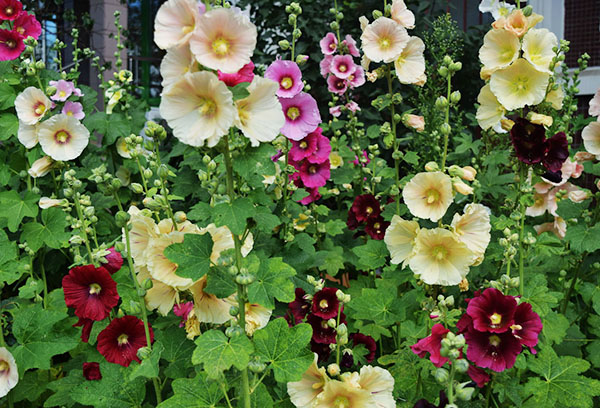
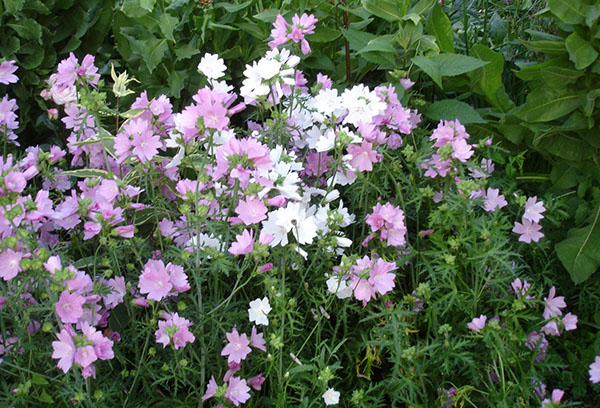
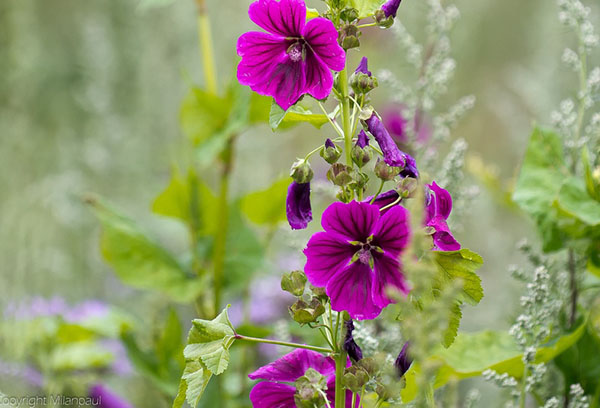
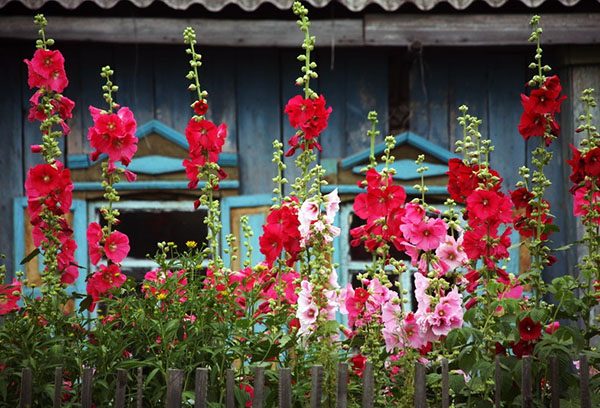
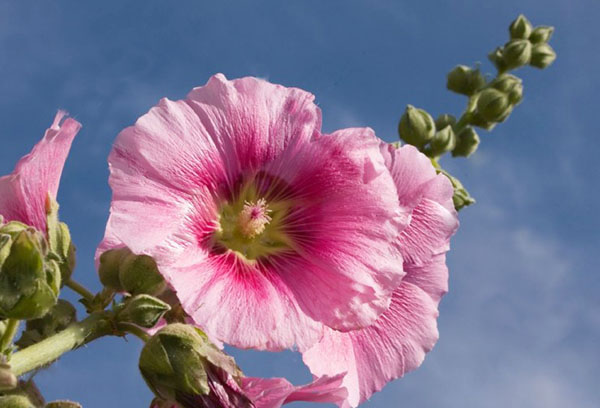
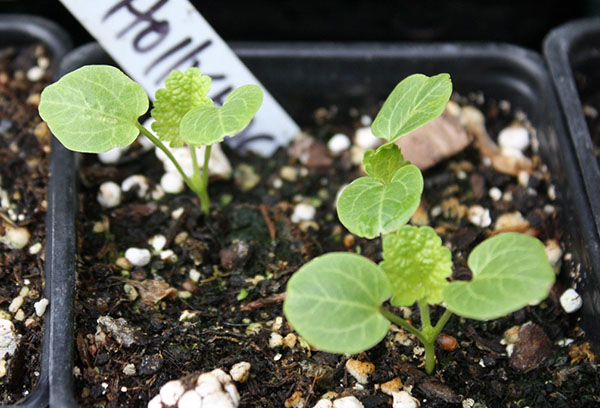
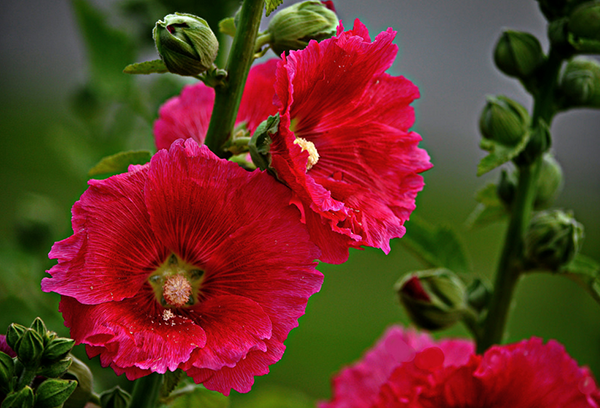
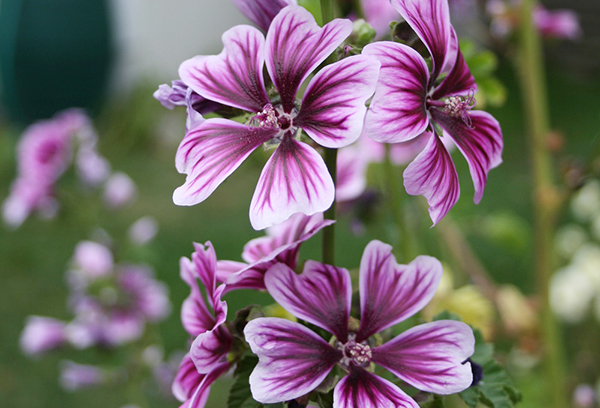
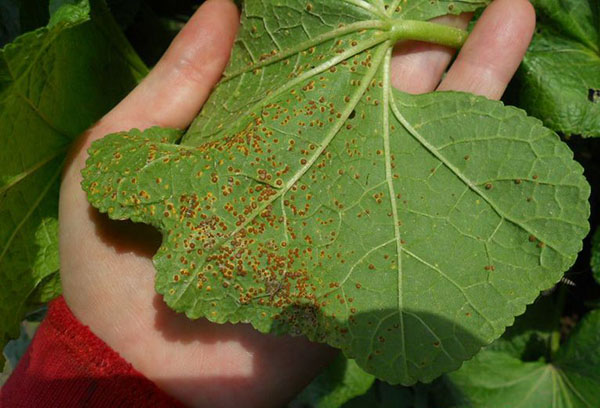
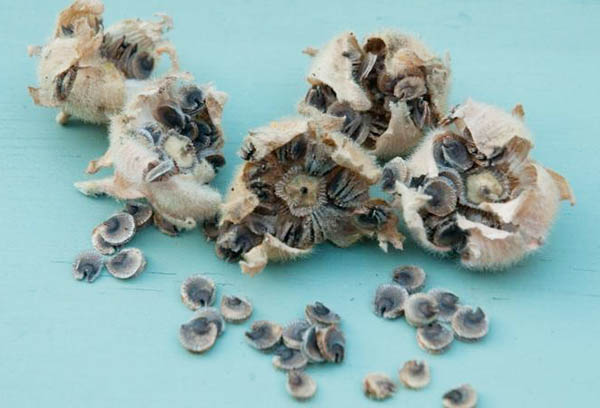
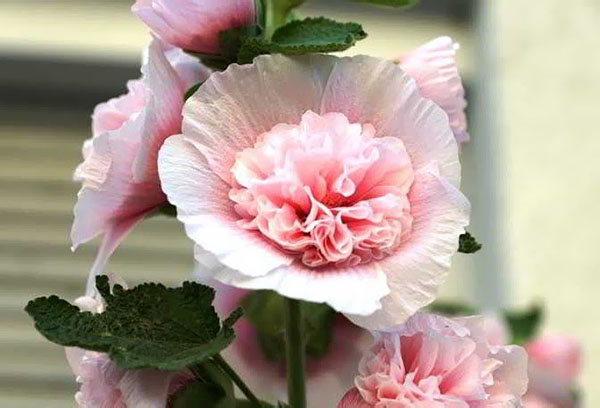
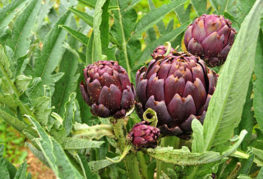
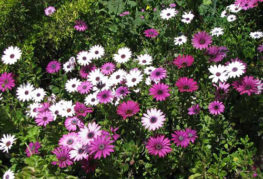
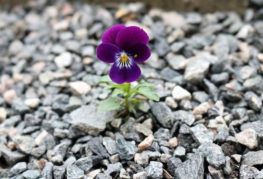
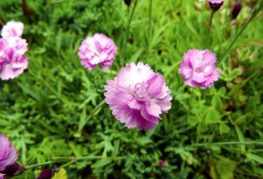
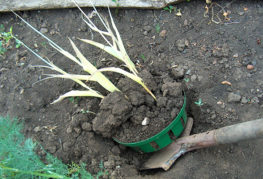
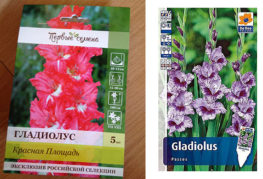
and will be published shortly.